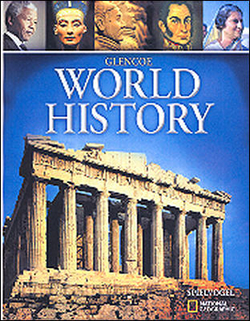Glencoe World History © 2010Chapter 2:
Western Asia and EgyptStudent Web Activity Lesson PlansDeath and the Afterlife Introduction Students have read about ancient Egyptian life. In this activity, students will focus on death in Egyptian religion. Archaeologists have discovered artistic images, written inscriptions, and other artifacts alongside the mummies in Egyptian burial tombs. By studying mummification and other burial customs, students can gain an understanding of what ancient Egyptians believed about death and the afterlife. Lesson Description
Students will explore a Web site about ancient Egyptian funerary customs. The site includes information about mummification, the use of shabtis, and the weighing of the heart. Students will read the information, answer four questions about what they have read, and then write a summary about the religious beliefs behind Egyptian burial customs. Instructional Objectives - The learner will be able to analyze Egyptian rituals and customs.
- The learner will explain beliefs behind ancient Egyptian burial practices.
Student Web Activity Answers - Mummification was one of the steps in ensuring that the dead entered the afterlife. The ancient Egyptians believed that the mummified body was the home for the soul or spirit. Therefore, full participation in the afterlife required than an individual’s identify be preserved. Mummification helped achieve this by preserving the body.
- Mummification took approximately 70 days. It involved four main steps: removing all of the internal organs except the heart, drying the body, stuffing the body, and carefully wrapping the body.
- Shabtis or ushabtis were small figurines in the form of humans. They were meant to act as servants for the deceased.
- The "weighing of the heart" was a ritual and the final step in the transition to the afterlife. The Egyptians believed that after a person died, the heart was weighed against the feather of Maat, the goddess of truth and justice. If a person had led a decent life, the heart balanced with the feather, and the person was rendered worthy to live forever in paradise with Osiris.
- Students should write about at least three burial customs, showing an understanding of the beliefs behind those customs.
 | 
















